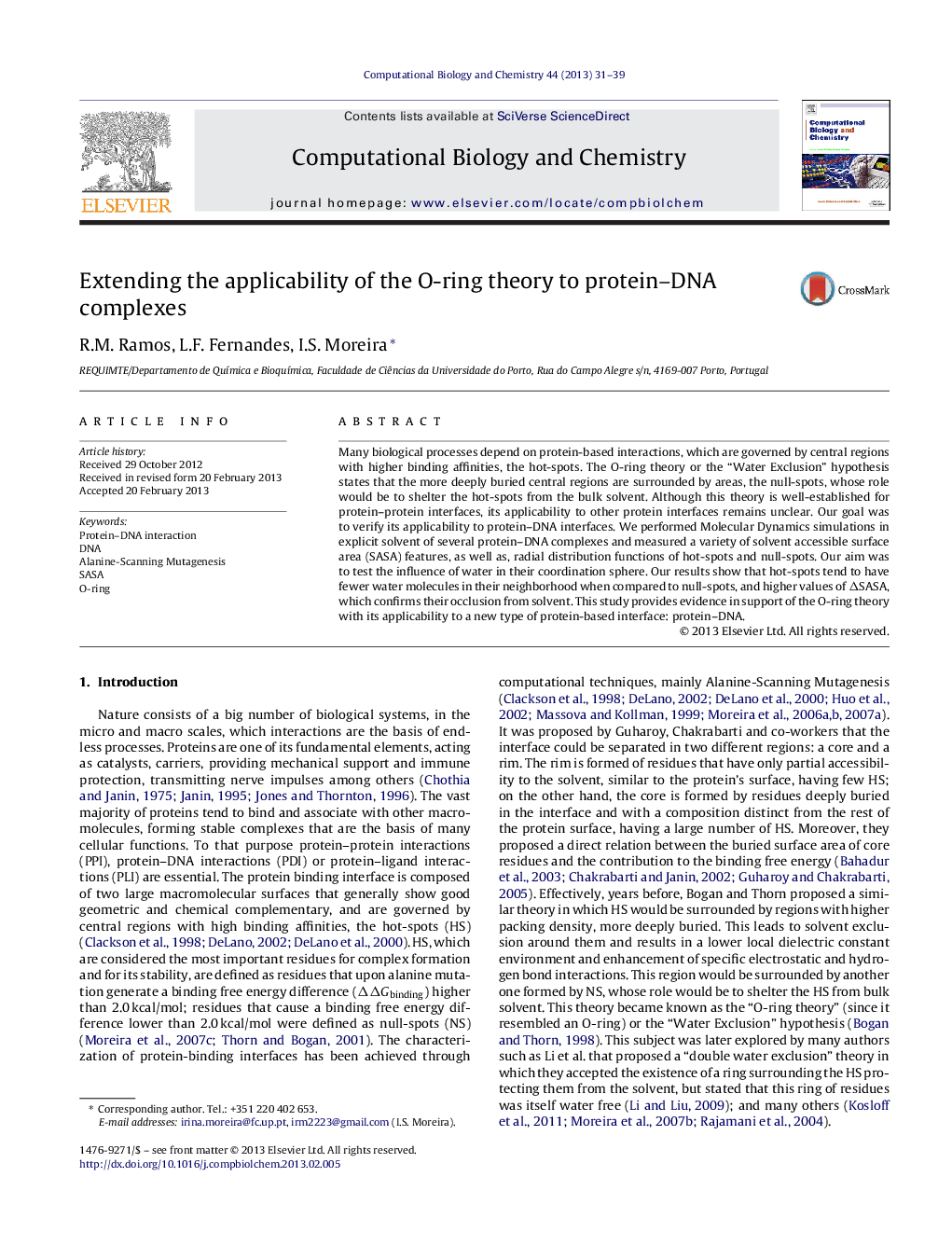| Article ID | Journal | Published Year | Pages | File Type |
|---|---|---|---|---|
| 15112 | Computational Biology and Chemistry | 2013 | 9 Pages |
•The O-ring theory is a well-established theory for protein–protein interfaces.•Lacks confirmation for other protein-based systems.•Molecular Dynamics simulations of several protein-DNA complexes.•High ΔSASA values for hot-spots and fewer water molecules around them.•The work confirms the applicability of the O-ring theory to protein-DNA interfaces.
Many biological processes depend on protein-based interactions, which are governed by central regions with higher binding affinities, the hot-spots. The O-ring theory or the “Water Exclusion” hypothesis states that the more deeply buried central regions are surrounded by areas, the null-spots, whose role would be to shelter the hot-spots from the bulk solvent. Although this theory is well-established for protein–protein interfaces, its applicability to other protein interfaces remains unclear. Our goal was to verify its applicability to protein–DNA interfaces. We performed Molecular Dynamics simulations in explicit solvent of several protein–DNA complexes and measured a variety of solvent accessible surface area (SASA) features, as well as, radial distribution functions of hot-spots and null-spots. Our aim was to test the influence of water in their coordination sphere. Our results show that hot-spots tend to have fewer water molecules in their neighborhood when compared to null-spots, and higher values of ΔSASA, which confirms their occlusion from solvent. This study provides evidence in support of the O-ring theory with its applicability to a new type of protein-based interface: protein–DNA.
Graphical abstractFigure optionsDownload full-size imageDownload as PowerPoint slide
